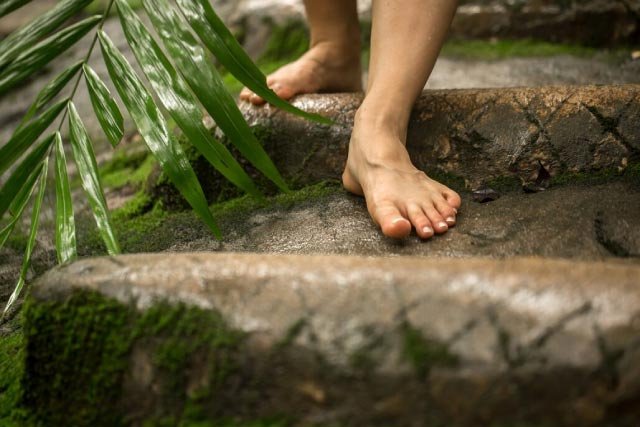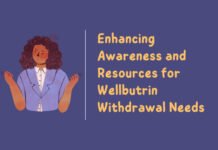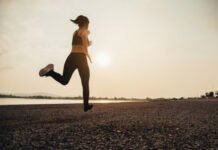
Walking barefoot is not just a trend; it’s an enriching journey that goes beyond the physical act of feeling the earth beneath your feet. This guide will explore the 10 incredible health benefits, potential risks, and practical tips for walking barefoot. Whether you’re a seasoned barefoot enthusiast or considering trying it, this comprehensive resource has you covered.
1. Benefits of Walking Barefoot

Walking barefoot isn’t just about connecting with nature; it’s a holistic practice with numerous health advantages. Let’s delve into the transformative 10 benefits each walking barefoot step can bring your body and mind.
1.1. Enhances Strength and Balance
Walking without shoes engages muscles, tendons, and ligaments in your feet and lower legs. This natural movement strengthens and balances your body in ways that shoes can’t match.
1.2. Aids in Weight Loss
Walking on natural surfaces like grass or earth adds resistance, engaging more muscles and burning additional calories. The varied terrain challenges your body, contributing to more efficient calorie burn and potential weight loss.
1.3. Improves Circulation
Stimulating the nerve endings in your feet through barefoot walking sends signals that boost blood circulation throughout your body. Improved circulation benefits cardiovascular health, oxygenates cells, and aids in detoxification, promoting overall vitality.
1.4. Strengthens Foot Arch and Muscles
Allowing your feet to move naturally without the constraints of shoes strengthens the foot arch and muscles. This may help prevent common issues such as inflammation of collapsed arches and plantar fascia.
1.5. Promotes Mind-Body Connection
The sensory feedback from walking barefoot fosters a stronger mind-body connection. Feeling the various sensations under your feet cultivates an awareness of the present moment, contributing to mental well-being.
1.6. Boosts Energy Levels
Barefoot walking on natural surfaces exposes you to negative ions associated with increased vitality and decreased fatigue. This, coupled with an enhanced mood, provides an organic energy boost during your walks.
1.7. Enhances Sensory Awareness
Walking barefoot heightens your innate sensory awareness by manipulating your muscular and skeletal feedback systems. This heightened awareness can improve coordination, stability, and agility.
1.8. Stimulates Reflexology Points
The soles of your feet house reflexology points connected to various organs. Walking barefoot stimulates these points, promoting better organ function, improved immunity, and overall balance.
1.9. Reduces Stress and Anxiety
Walking barefoot has a calming effect on the nervous system, providing a grounded connection with the earth. This can alleviate the effects of stress, anxiety, and mild depression, allowing you to find solace in nature.
1.10. Encourages Barefoot Running
For the more adventurous, barefoot running can take your foot strength, balance, and overall fitness to new heights. However, it’s crucial to transition gradually and ensure proper running technique to avoid injury.
2. Understanding the Risks: Navigating the Barefoot Path Safely

While the 10 benefits of walking barefoot are substantial, it’s essential to acknowledge potential risks and take precautions to ensure a safe and enjoyable experience.
2.1. Watch Your Step for Sharp Objects
Vigilance is crucial to avoid sharp objects in unfamiliar or potentially littered areas. Always be aware of your surroundings.
2.2. Mind Rough Surfaces
Uneven pavements or rough surfaces can lead to blisters or sore spots. Choose your walking route wisely to minimize discomfort and potential injuries to stay healthy.
2.3. Be Mindful of Extreme Temperatures
Always test the temperature of the ground with your hand before walking barefoot. Avoid walking on surfaces with extreme temperatures to prevent thermal injuries.
2.4. Guard Against Fungal and Bacterial Infections
Frequent barefoot walks in areas with microbes increase the risk of bacterial infections. Maintain foot hygiene and wear shoes when necessary to minimize this risk.
2.5. Consider Lack of Support and Cushioning
For individuals with painful foot conditions, additional support like custom arch support orthotics may be necessary to avoid exacerbating the condition during physical activity like running and stretching.
2.6. Beware of Allergens and Irritants
Walking barefoot in natural environments exposes your feet to potential allergens. Individuals with known allergies should take appropriate measures, such as thorough foot washing after walking barefoot.
By being mindful of your environment, maintaining good foot hygiene, and taking necessary precautions, you can minimize the likelihood of injuries while enjoying the benefits of walking barefoot.
3. Walking Barefoot: Doing It Right

Ready to dip your toes into the world of barefoot walking? Let’s break it down into simple steps to ensure you get the most out of this enriching experience.
3.1. Start Gradually
If you’re new to walking barefoot, start slow. Begin on smooth and safe surfaces like walking on a treadmill, allowing your feet to adapt to the sensation before venturing onto more challenging terrains.
3.2. Progress to Different Terrains
As your feet become more accustomed, gradually introduce them to various surfaces. Start with grass or sandy beaches, then explore more uneven surfaces like gravel paths or forest trails.
3.2. Maintain an Upright Posture
Good posture is crucial for walking barefoot properly. Keep your head up, shoulders relaxed, and spine aligned to facilitate agility and minimize discomfort.
3.2. Take Shorter Strides
Shorter strides provide better stability, enabling your feet to adapt quickly to the terrain. Aim for a natural and relaxed gait, distributing impact forces evenly to reduce the risk of strain or injury.
3.3. Allow Natural Foot Adaptation
Let your feet find their natural rhythm and movement. Avoid forcing them into a specific pattern or gait, allowing intrinsic foot muscles to strengthen naturally.
3.4. Listen to Your Body
Pay attention to how your body feels while walking barefoot. Adjust your walking technique or terrain if you experience persistent pain or discomfort. Consult a medical professional if needed.
3.5. Wear Protective Shoes When Necessary
Use common sense. Wear protective shoes, such as sharp objects, extreme temperatures, or rough surfaces if the situation requires it. Maintain good foot cleanliness to reduce the probability of damage.
Conclusion
Walking barefoot is not just a physical activity; it’s an invitation to profound benefits for optimizing health and wellness. The advantages are numerous, from heightened awareness to stress reduction and increased energy levels. However, it’s essential to approach barefoot walking cautiously, especially for those with existing foot conditions. By being mindful of your surroundings, practicing good hygiene, and seeking professional advice, you can safely embrace the freedom of walking barefoot and unlock its incredible potential for overall well-being.
Frequently Asked Questions
How long should you walk barefoot?
Start gradually with shorter durations (10-15 minutes) and increase as your feet adapt. Listen to your body’s signals and avoid pushing beyond your comfort level.
How often should you walk barefoot?
Incorporate barefoot walking regularly into your routine. Start with a few weekly sessions and increase the frequency as you feel comfortable.
Does walking barefoot make you happier?
Absolutely! Walking barefoot in natural surroundings enhances your sense of well-being. Physical activity and connection with nature trigger the release of endorphins, contributing to an overall feeling of contentment.








